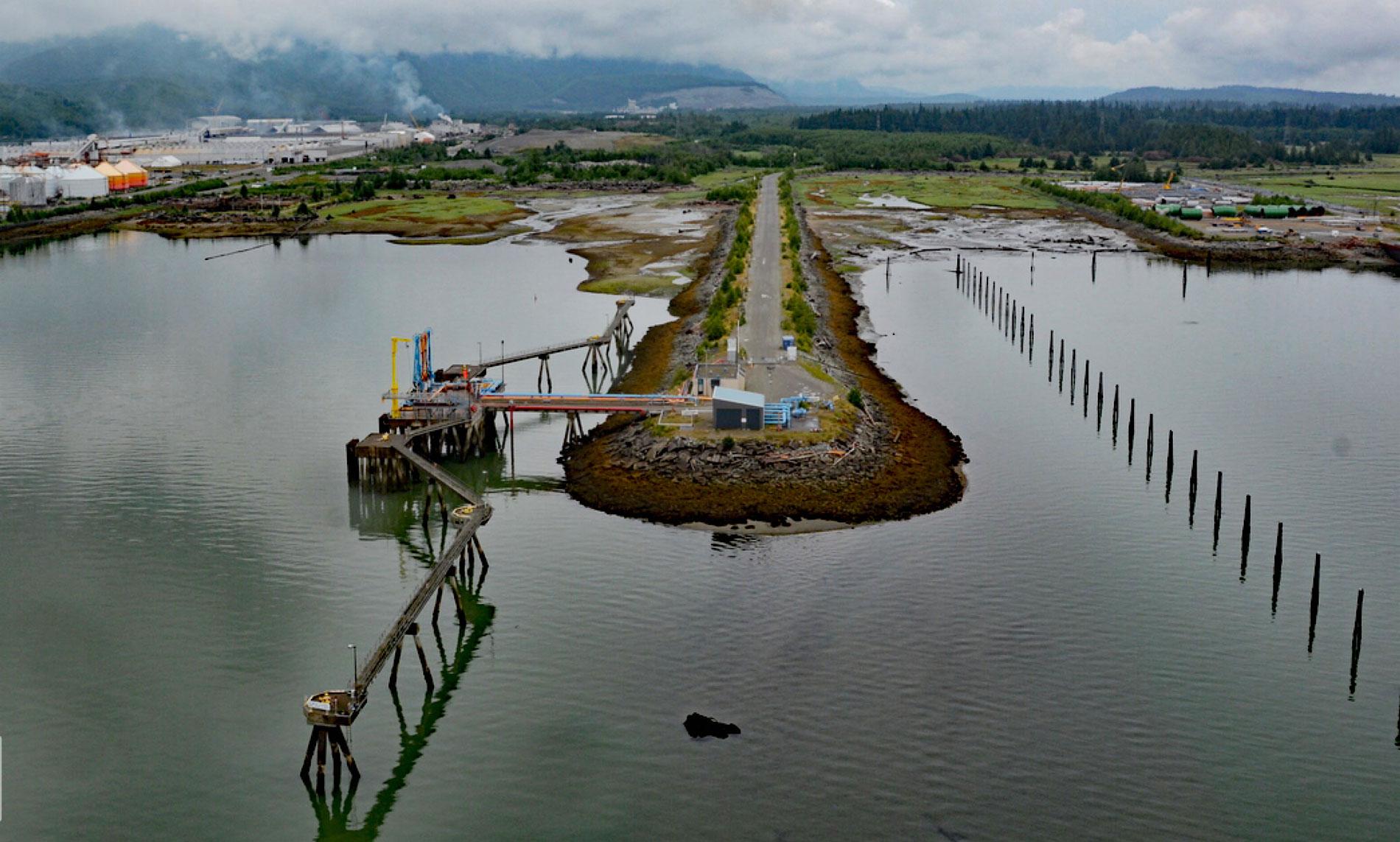Kitimat is a designed community for employees of an aluminum smelter situated on the alluvial fan of the Kitimat River at the head of Douglas Channel, about 71 miles (115 km) east-southeast of Prince Rupert and 32 miles (52 km) south of Terrace, British Columbia. The community was named after the nearby Haisla village of Kitamaat, which is a Tsimshian word meaning ‘people of the snow’. The Kitimat River drains a watershed of 491,740 acres (199,000 ha) and starts from an elevation of 6,600 feet (2,012 m) on the northwestern flank of Atna Peak in the Kitimat Ranges and flows generally northwest for 33 miles (53 km) and then south-southwest for 20 miles (32 km) to Kitimat Arm of Douglas Channel. The channel is named after Sir James Douglas, the first governor of the Colony of British Columbia. The alluvial fan of the Kitimat River is formed by the accumulation of sediment deposited where the stream velocity loses energy as it emerges from the mountainous uplands at the head of the fjord. Human settlements often occur on alluvial fans, especially in steep fjord topography, because it provides a place with relatively flat terrain for construction and a water supply despite the associated hazard of flooding.
A village has historically been situated at the head of Douglas Channel for hundreds of years. The origin story tells of a people known as the Owikeno, who lived at the head of Rivers Inlet, travelled north after a tribal quarrel until eventually they settled at the mouth of a river at the head of Douglas Channel. The river had a good supply of salmon and a run of eulachon in the spring. One day they noticed a piece of carved cedar floating down the river, indicating that other people were living in the vicinity. They travelled up the valley and met another band that spoke a different language. They made friends with the newcomers and invited them to join them at the river mouth, where the two groups then lived together, and the Kitamaat people, now known as the Haisla First Nation, came into existence. In 1793, Captain George Vancouver was one the first Europeans to thoroughly explore Douglas Channel but the village at the mouth of the Kitimat River had little European influence until 1876 when one of the village inhabitants, a man named Wahus-gumala-yoo who was later baptized Charlie Amos, travelled to Victoria and was converted to Christianity. He returned to the village and despite the objections of the village shamans, his beliefs spread to other residents. By 1893, a residential school, a new church, and a mission house were built. In 1902, Kitimat was considered as a possible terminus for the Grand Trunk Pacific Railway, but Kaien Island was selected and eventually became Prince Rupert.
The Aluminum Company of Canada was a major mining and manufacturing corporation established as a subsidiary of the Aluminum Company of America, the founders of which invented the power demanding process for extracting aluminum from bauxite. In 1951, the company initiated a $500 million project to build the Kenney Dam across the Nechako River, and a tunnel 10 miles (16 km) long bored under Mount Dubose to transport the captured water to a hydroelectric generating station at Kemano. From there, a transmission line was strung to carry the electricity over 50 miles (80 km) to Kitimat, where an aluminum smelter was established. The company also built the community of Kitimat designed by Clarence Stein and constructed a deep-sea terminal to import bauxite and export aluminum. In 2007, the company was sold to Rio Tinto which now operates the smelter at Kitimat. In 2018, an investment of $40 billion was approved by the shareholders of LNG Canada to develop a liquified natural gas terminal at Kitimat with an expected completion in 2025. Read more here and here. Explore more of Kitimat and Douglas Channel here:

